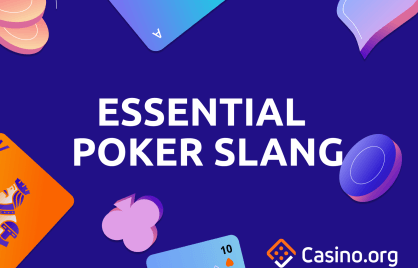The Heady World of High Stakes Poker Cash Games

Summarize this post
High Stakes Poker: What You’ll Learn
💰 How high stakes poker cash games work, including blinds, buy ins, and game structure
🧠 How psychology, table image, and social dynamics influence high stakes decision making
📉 Practical bankroll management tips that lower risk and extend your time in the game
🎯 Key strategic ideas such as table selection, targeted aggression, and adjusting to bluff frequency
🔥 How mental toughness, emotional control, and understanding variance drive long term success
High stakes poker cash games have become one of the most talked about formats in the modern poker world. These games feature large blinds, massive pots, and intense psychological battles.
As livestreams and YouTube channels continue to grow, players can now watch high stakes action from anywhere. The result is an unprecedented level of access to the most thrilling form of cash game poker.
What High Stakes Poker Really Means
A typical home game might run $1/$2 blinds, but high stakes poker begins at levels like $200/$400 and can quickly escalate to $500/$1000 or higher. Six figure pots are common and million dollar pots are no longer surprising. Straddles and other blind increases often push the action far beyond the posted stakes.
In most public card rooms, anything from $5/$10 and above is considered high stakes play, while $10/$20 is a common dividing line between mid stakes and high stakes. Private games and international casinos often set their own benchmarks depending on the wealth of the players and the appetite for action.

Image Credit: Netfalls remy musser/Shutterstock
Understanding the Psychology of High Stakes Play
High stakes games attract a unique mix of top professionals and wealthy recreational players. Many games revolve around one or two VIPs. To stay invited, players often need to be willing to gamble and keep the atmosphere friendly.
Poker psychology changes once the stakes rise. In tournaments you often want to pressure opponents and demonstrate strength. In high stakes cash games you usually want the opposite. Your goal is to keep action players comfortable and encourage them to stay in the game.
Key Strategies for Success in High Stakes Poker
If you find yourself invited to a high stakes poker cash game, certain strategic fundamentals become even more important.
Poker Bankroll Management
The risk of ruin is incredibly high at these levels. Standard advice recommends having at least 20 to 30 buy ins for the game you are playing. This guideline works for professional players who intend to grind consistently. However, reaching nosebleed stakes through pure grinding is extremely difficult.
Many players rely on secondary income or seek backing from investors. Whatever approach you take, keeping your poker money separate from your personal finances is essential. If your bankroll drops by 20 percent or more, dropping down in stakes is almost always the correct move.
Ruthless Table Selection
Table selection is one of the most important skills in cash game poker. You should only play in games where opponents are likely to make significant mistakes. If you cannot identify the weaker players, you may be the weakest player yourself. Games filled with tight regulars usually turn into rake traps where no one profits.
Smart Aggression
High stakes cash games are generally aggressive. Three betting ranges are wider and players are more willing to fight for pots. You can improve your performance by expanding your three bet range based on position, by targeting weaker opponents with pressure, and by adjusting to an opponent’s bluff frequency. If players bluff more often, calling more often becomes profitable. Strong aggression is rewarded but only when directed with intention.

Image Credit: Netfalls remy musser/Shutterstock
Advanced Poker Psychology
The mental side of high stakes poker is just as important as technical skill.
Reading Opponents
Live tells become more relevant at high stakes. Players are more willing to bluff and more likely to reveal subtle patterns. A long pause, a change in breathing, or a small movement can be informative if you pay close attention.
Emotional Control
Tilt destroys bankrolls faster at high stakes than anywhere else. Both losing tilt and winning tilt can ruin a session. Keeping emotions steady throughout long sessions is a major advantage.
Mental Toughness
Even the strongest players experience brutal downswings. Mental resilience is essential because the variance at high stakes is extreme. Accepting that outcomes can be unpredictable helps you stay focused on long term decision making.
Understanding the Relationship Between Luck and Skill
Luck influences short term poker results but skill becomes dominant over time. Research shows that a meaningful skill edge appears after about 1471 hands of play. In live cash games this is roughly one full day of action. In online play it is a little under sixteen hours of single table volume.
A beginner may survive a day on luck but they eventually lose if they lack fundamental skills. The goal is to stay in the game long enough for skill to rise above variance.
Recognizing Game Dynamics
High stakes games reward players who pay close attention to the table. Your table image affects how others play against you. If players think you are tight, increasing your bluff frequency can be profitable. If they believe you are wild, reducing your bluffs leads to better results.
Social dynamics also matter. The high stakes poker world values friendly and entertaining players. Being sociable can be worth more than any paid poker course. A welcoming personality helps keep VIPs at the table and can get you invited to more lucrative games.

Image Credit: Netfalls remy musser/Shutterstock
Famous High Stakes Poker Scenes
High stakes poker has always captured the public’s imagination. Classic television shows have given way to livestreamed games that feature eye watering pots. Hustler Casino Live regularly streams high stakes events including its yearly Million Dollar Game. Poker at the Lodge has also developed a large following with hundreds of thousands of subscribers.
Major tournament series like Triton Poker often transition into large streamed cash games once the events end. The biggest action in the world is still centered around Macau where ultra wealthy players keep the stakes soaring. Many high stakes games have also moved into private settings where security risks and potential cheating can become concerns.
High Stakes Fun
High stakes poker cash games combine money, psychology, strategy, and emotional control into a unique test of skill. The drama of large pots draws attention, but the players who survive are the ones who understand bankroll management, table selection, and mental discipline.
The most successful high stakes players are not simply aggressive or mathematically sharp. They are patient, observant, adaptable, and willing to walk away when the situation demands it.
For most players, million dollar pots will remain a spectator experience. However, the lessons from high stakes poker extend far beyond the felt. The true challenge is not the cards you receive. The true challenge is how you choose to play them.
Title Image Credit: Netfalls remy musser/Shutterstock


